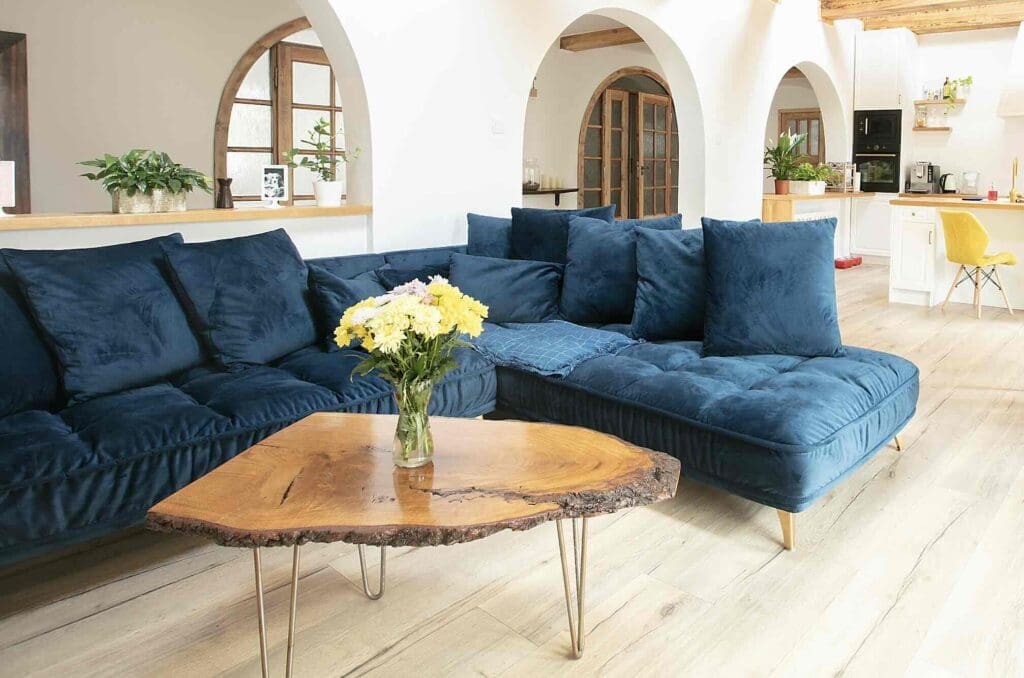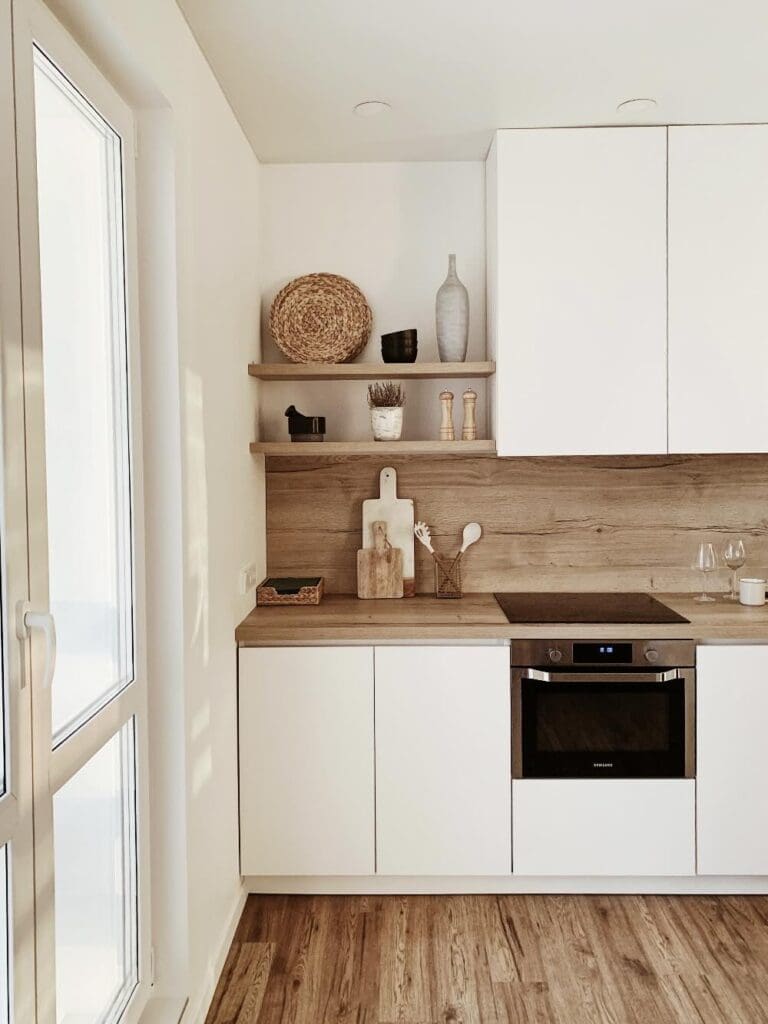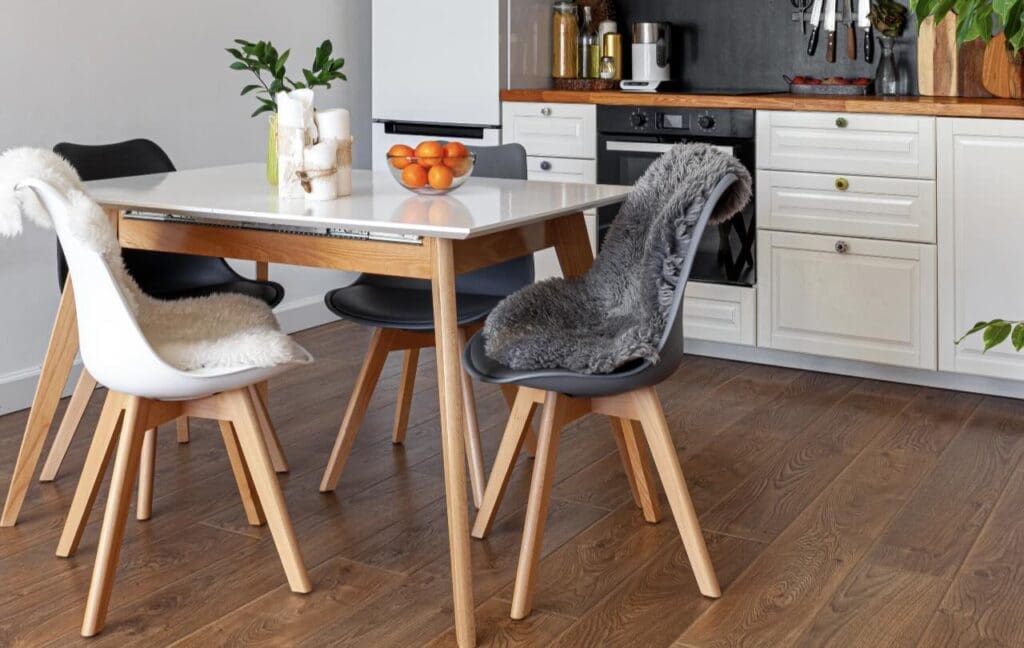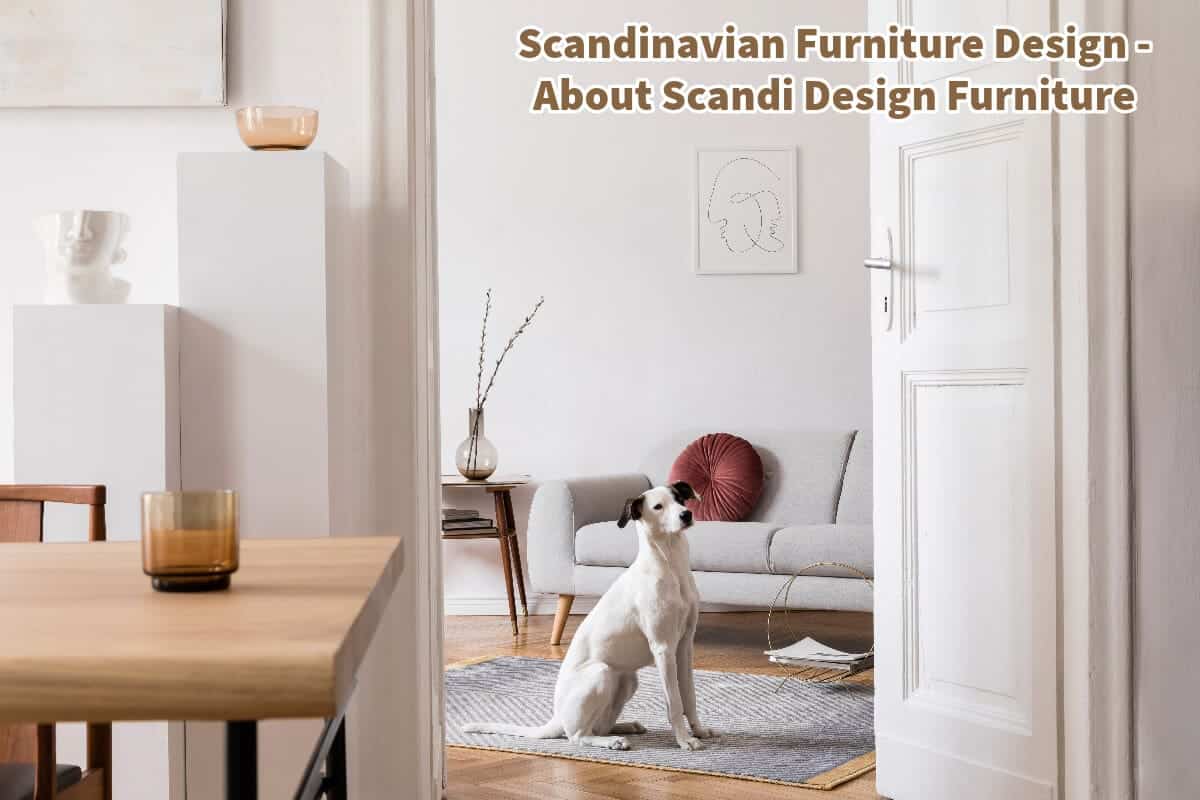Having a Swedish mother has allowed me to spend considerable time in Sweden, where I’ve developed a deep appreciation for Scandinavian home decor, often called Scandi design.
Scandinavian furniture design is characterized by its emphasis on simplicity, minimalism, and functionality; this design style has an enduring appeal. What fascinates me even more is the global popularity of the Scandinavian aesthetic and the reasons behind its widespread appeal.
Table of Contents
- Scandinavian Furniture Design: The Essence Of Scandi Simplicity, Minimalism, And Functionality
- Characteristics Of Scandinavian Design
- Critical Elements Of Scandinavian Design And Furniture
- Historical Context Of Scandinavian Design
- Scandinavian Design Principles
- Related Content
Scandinavian Furniture Design: The Essence Of Scandi Simplicity, Minimalism, And Functionality
Scandinavian design is more than a trend; it’s a design philosophy that emerged in the Nordic countries—Denmark, Finland, Iceland, Norway, and Sweden—in the early 20th century, particularly gaining prominence in the 1950s. With a focus on simplicity, minimalism, and functionality, the Scandinavian design aesthetic has proven timeless.
Its enduring popularity has made it one of the most widely adopted styles worldwide. Read on as we delve into Scandinavian furniture design’s roots, features, and continuing relevance.

Characteristics Of Scandinavian Design
Scandinavian design is a unique look and design trend. Many characteristics make up this design. Read on as we explore the more popular design characteristics.
Simplicity
Scandinavian design embodies elegance and simplicity. Instead of relying on ornate decorations or elaborate features, Scandi furniture champions straight lines, simple forms, and subtle details.
This creates a serene, uncluttered atmosphere conducive to relaxation and well-being.
Minimalism
When it comes to Scandinavian design, less is often more. Furniture pieces are reduced to their essential elements, stripping away any extra details. The result is a clean, streamlined look that feels modern and timeless.
Functionality
Practicality is at the core of Scandinavian design. Pieces are not merely decorative but serve specific functions. High-quality materials are chosen for durability, and innovative design ensures the furniture is as practical as beautiful.
Natural Influences And Materials
Scandinavian design often features a palette inspired by nature—think neutral colors like white, grey, and beige or cooler tones like blues and greens. Natural light is another critical component, supported by large windows and open spaces.
Materials such as pale woods, wool, linen, leather, and glass are commonly used, reinforcing the connection to nature.
Critical Elements Of Scandinavian Design And Furniture
Some key elements always stand out when looking at Scandinavian design and furniture.
White Walls
White walls act as a blank canvas, allowing furniture and decorative pieces to stand out. This magnifies the impact of color and amplifies natural light, creating an airy, spacious feel.

When I go into the homes of my friends and relatives in Sweden, I always send out the white walls they have in their homes. White is always a popular color since, in many parts of Scandinavia, winters can be cold and dark, and white will bring a kind of brightness or light into the room.
Wood Floors
Wooden flooring is another hallmark of Scandinavian interiors. Usually appearing in lighter shades, these floors add warmth and texture, grounding the space in natural beauty.

Most of the homes I have been in Scandinavian have hardwood floors with rugs and carpets. Scandinavians appreciate the natural look of wood.
Modern Furniture
Modern, often understated furniture is a staple in Scandinavian design. Designers like Alvar Aalto, Arne Jacobsen, and Eero Saarinen have made significant contributions, creating iconic pieces that are both functional and aesthetically pleasing.

Minimalist Decor
Scandinavian decor emphasizes a minimalist approach. Whether a simple vase, an elegant lamp, or a cozy rug, each item is carefully selected for its function and visual appeal without overwhelming the space.
Historical Context Of Scandinavian Design
Scandinavian design came to the fore when many Nordic countries emerged from the shadow of war and economic hardship in the 1950s. That was when many Americans also started to appreciate the Scandinavian look and decor.
Scandinavian design focuses on enhancing everyday life; this design philosophy was not just an aesthetic choice but a lifestyle one, aiming to combine beauty, function, and affordability. Over time, what began as a primarily domestic movement has transcended borders, influencing interiors and furniture design globally.
The Impact Of Scandinavian Design Today
In today’s fast-paced, technology-driven world, the essence of Scandinavian design is perhaps more relevant than ever. The style’s focus on simplicity and functionality serves as a counterpoint to the complexity and chaos that often define modern life.
Moreover, the emphasis on sustainable, natural materials resonates with increasing global concerns about environmental conservation.
Scandinavian Design Principles
Adopting a Scandinavian design doesn’t necessarily require a complete home makeover. You can integrate elements gradually.
Here are some things you can do to have a Scandinavian design and look in your home:
- Start With A Neutral Base: Use white or light-colored paint for your walls.
- Choose Functional Furniture: Go for pieces that offer both form and function, like a sleek coffee table with storage space.
- Add Textures: Use woolen throws, linen cushions, or leather accents to add layers of texture.
- Incorporate Greenery: Potted plants can bring in a touch of nature and vitality.
- Let In Natural Light: To allow ample natural light flow, minimal window treatments.
Scandinavian design stands as a testament to the power of simplicity, minimalism, and functionality. Its influence, originating from the Nordic countries, has significantly impacted the design world, offering a cohesive, elegant, and practical approach to interior living spaces.
As we navigate the complexities of the 21st century, the enduring principles of Scandinavian design provide aesthetic pleasure and a philosophy for better, more harmonious living.
If you’re interested in producing Scandi furniture for export and manufacturing, we at Mondoro would be delighted to discuss how we can assist you.
Find out more about how Mondoro can help you create, develop, and manufacture excellent home decor and furniture products – don’t hesitate to contact me, Anita. Check out my email by clicking here or become a part of our community and join our newsletter by clicking here.
Mondoro gives out a FREE Lookbook to anyone interested. You can receive a copy of our latest Lookbook by clicking here.
Listen to our Podcast called Global Trade Gal. You can find it on all major podcast platforms. Try out listening to one of our podcasts by clicking here.
Subscribe to our Mondoro Company Limited YouTube Channel with great videos and information by clicking here.
Related Content
Nordic Vs. Scandinavian Design Is There A Difference?
In interior design, “Nordic” and “Scandinavian” are often used interchangeably. These design styles have gained immense popularity recently for their clean lines, functional approach, and timeless aesthetics.
You can learn more by reading our blog, Nordic Vs. Scandinavian Design Is There A Difference? by clicking here.
Scandinavian Design And The United States 1890 – 1980 Impact
I recently attended an exhibition at the Milwaukee Art Museum entitled Scandinavian Design and The United States 1890 – 1980. This exhibition was co-organized by the Milwaukee Art Museum, The Los Angeles County Museum of Art, Nationalmuseum Sweden, and Nasjonalmuseet Norway.
To learn more, you can read Scandinavian Design And The United States 1890 – 1980 Impact by clicking here.
Wabi-Sabi: Embracing Imperfection And Transience In Design
In an era where everything is mass-produced to perfection, where symmetry is celebrated, and where glossy, flawless finishes are the norm, the ancient Japanese design philosophy of Wabi-Sabi offers a breath of fresh air. Instead of striving for perfection, Wabi-Sabi celebrates imperfection and sees beauty in the simple, rustic, and imperfect life and design choices.
You can discover more by reading Wabi-Sabi: Embracing Imperfection And Transience In Design by clicking here.

